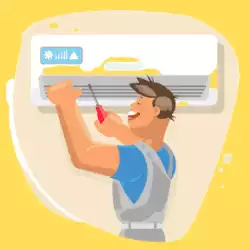AC not turning on? Before you panic, read our guide below.
We’ll cover some basic troubleshooting tips to try, things to consider, and when to call an air conditioner repairman.
AC Not Turning On?
What’s going wrong when you notice your AC not turning on? Air conditioners are one of those things we tend to take for granted until they suddenly stop working.
It seems like extremely hot days are the most common times to have an AC problem. If you’re willing to try, there are a few DIY fixes that might provide you with some cool relief.
That’s not to say that every problem behind an AC not turning on is a simple fix. Some of the more complex or dangerous components in an air conditioning unit could be the culprit.
Don’t Panic; Call for Help
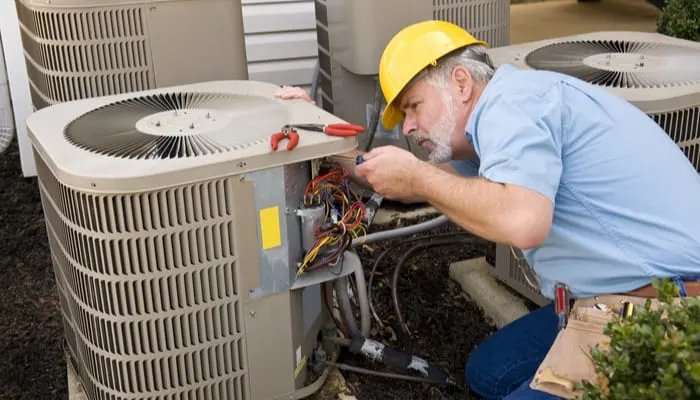
Carolyn Franks/Shutterstock
In these cases, you’ll have to call a professional for help. We’ll outline the different problems that can cause an air conditioner not to turn on.
Included are simple problems you can fix at home and bigger problems that will require an HVAC technician’s help. When an AC isn’t turning on at all, something is going on that needs immediate attention.
So read through the troubleshooting guide and try the DIY fixes, but be ready to call an HVAC company if those don’t work. Don’t have an HVAC company you trust?
Use our form to describe the problem and enter your zip code. We’ll connect you with an HVAC company in your area, plus you’ll get a free quote for their service.
We partnered with Networx to help you find local HVAC repair in your area. Click to below to get a FREE quote.
Air Conditioner Parts
Before we get into the details of the problems that cause an air conditioner not to turn on, you need to know the main parts of an air conditioner.
These will be referenced in the troubleshooting guide, and it’s helpful to know each one’s function.
- Split AC Unit: Split AC units have an outside and inside unit. The unit outside (condensing coil, fan, and compressor) draws air into the home so it can be cooled and circulated by the inside unit (evaporator coils and filter).
- Condensing Unit: The box-shaped unit you see outside contains the fan, condensing coil, and compressor.
- Refrigerant: A coolant substance that can phase change rapidly, from liquid to gas and back.
- Evaporative Coil: Located inside a split AC unit, evaporator coils hold the cold refrigerant pulled through by the compressor. When warm air blows over these coils, it is cooled and circulated through your home. The byproduct of this is condensate, or water, that forms on the coils.
- Drain Pan: Your AC’s drain pan catches the condensate (water) as it drips off the evaporator coils, then directs it to the condensate drain line.
- Condensate Drain Line: This is where condensate from the drain pan goes to flow out of your home; it’s usually just a white PVC pipe.
- Condensate Pump: Only present if your indoor AC unit is installed in the basement, this pump actively pulls the condensate up and out of your home through the drain line since gravity can’t do the job.
- Compressor: The compressor in the outside unit raises the pressure of the gas form of refrigerant from the evaporator coil and moves it to the condenser coil.
- Condenser: Located in the outside unit, the condenser transforms the refrigerant’s gas form back into a liquid to be compressed and cooled again.
- Thermostat: The thermostat is the indoor temperature control device you use to input your desired temperature setting for the air conditioner.
- Air Filter: Circulating air passes through the air filter, which removes dust, debris, pet hair, or other things that could clog the HVAC system.
With these main parts identified and explained, let’s look at the most common reasons for an AC not turning on.
Top 8 Causes of AC Not Turning On
Start troubleshooting what’s going on with your air conditioner by reading through the most common causes of an AC not turning on.
1. Lack of Power Supply
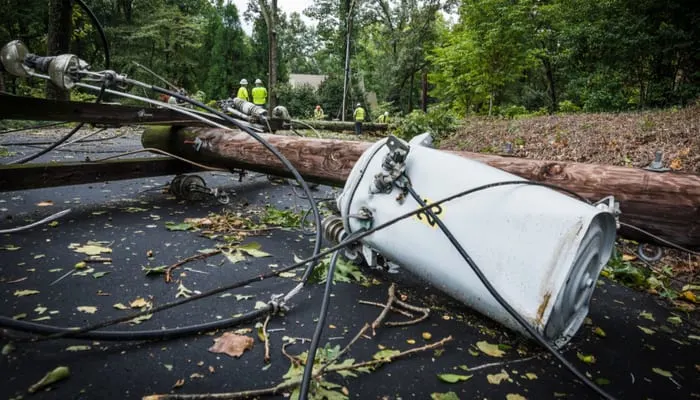
Scott Alan Ritchie/Shutterstock
A lack of power supply would certainly cause an air conditioner not to turn on. Usually, the power supply is interrupted when the AC trips the circuit breaker.
This can happen on hot, sunny days when the temperature rises sharply. Your air conditioner has to work much harder to cool your home.
This can increase the amount of power it’s using and trip the breaker. A power surge can result in a tripped breaker as well.
How to Repair
This is usually a simple DIY fix. Go to your home’s main electrical panel and find the tripped breaker switch. Push it back to the Off position, then all the way forward to the on position.
Try turning your air conditioner on to see if it fixes the problem. If not, or if your circuit breaker won’t reset, call an electrician to take a look. There could be a problem with your wiring or a short circuit.
2. Shut-Off Switch
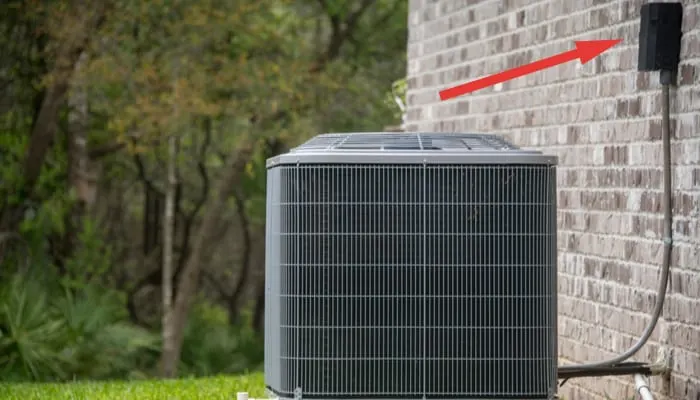
John Royal/Shutterstock
Your outdoor AC unit might have a shut-off or disconnect switch in a nearby mounted metal box. Look for a label on the box that says something like “Emergency Shut-Off.”
This is more likely to be the culprit if you’ve very recently had work done on your HVAC system. Your technician might have failed to turn the switch back on after completing the work.
How to Repair
Find the metal box mounted near the outside AC unit and open it up. Flip the switch to the on position if it’s off.
3. Faulty Thermostat or Temperature Control
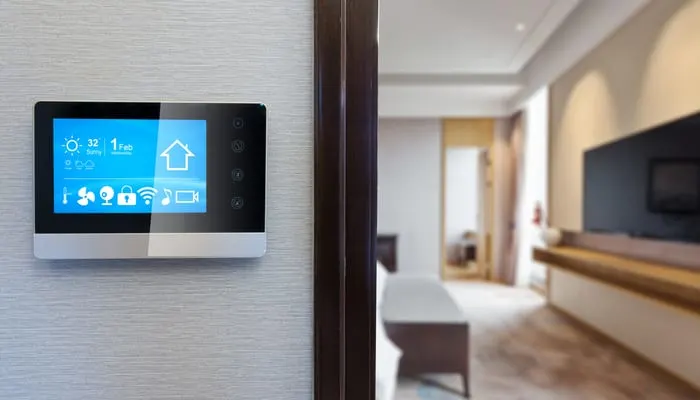
Zhu Difeng/Shutterstock
A thermostat that is broken, out of battery power, or off would result in your AC not turning on. If you’ve seen that the breaker wasn’t tripped and the shut-off switch was on, this should be the next thing you check.
Your thermostat is mounted to the wall in your home. You most likely have a digital, touchscreen thermostat. Digital thermostats use a device called a thermistor to measure the temperature of the air.
You use the thermostat to set your air conditioner to the temperature you want your home to be. If it’s not working, the air conditioner has no “commands” from you and won’t turn on to cool.
How to Repair
Check your thermostat’s screen to see if it’s on. If the screen is blank, try replacing the batteries. If that doesn’t work, the problem could be wiring or electrical connection issues.
Call an electrician or HVAC repair company to have it checked out and fixed. You don’t want to start a fire or cause yourself bodily harm trying to chase an uncertain problem.
4. Dirty Filter
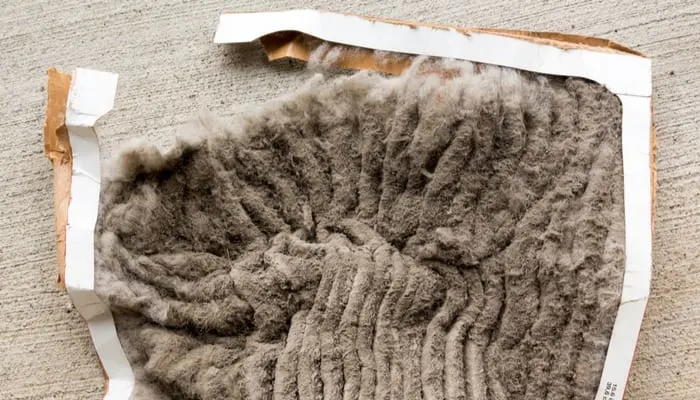
Steve Heap/Shutterstock
Replacing your filter regularly isn’t an optional recommendation. It’s necessary to perform air conditioner maintenance to keep your HVAC system healthy and running efficiently.
If your filter is very dirty and clogged, it’s no longer doing its job. The filter’s job is to stop dust, pollen, debris, pet hair, and other particulate matter from circulating through your HVAC system and interfering with its performance.
Because the air that enters the system is pulled through the filter, a dirty filter doesn’t allow enough airflow. And this presents a big problem.
Without enough warm air flowing over the internal parts with a cold refrigerant, the condensate will eventually freeze and cover the evaporator coil with ice.
If the AC continues to be run while frozen, it can lead to a complete breakdown of the system. In some cases, this requires the entire system to be replaced.
How to Repair
You can try replacing your air filter with one of the correct sizes. However, if the air conditioner isn’t turning on at all and it’s been run with frozen coils, it might be a bigger issue than the filter.
Call an HVAC company to check the system out and see what else may need to be repaired.
5. Clogged Condensate Drain Line or Faulty Pump
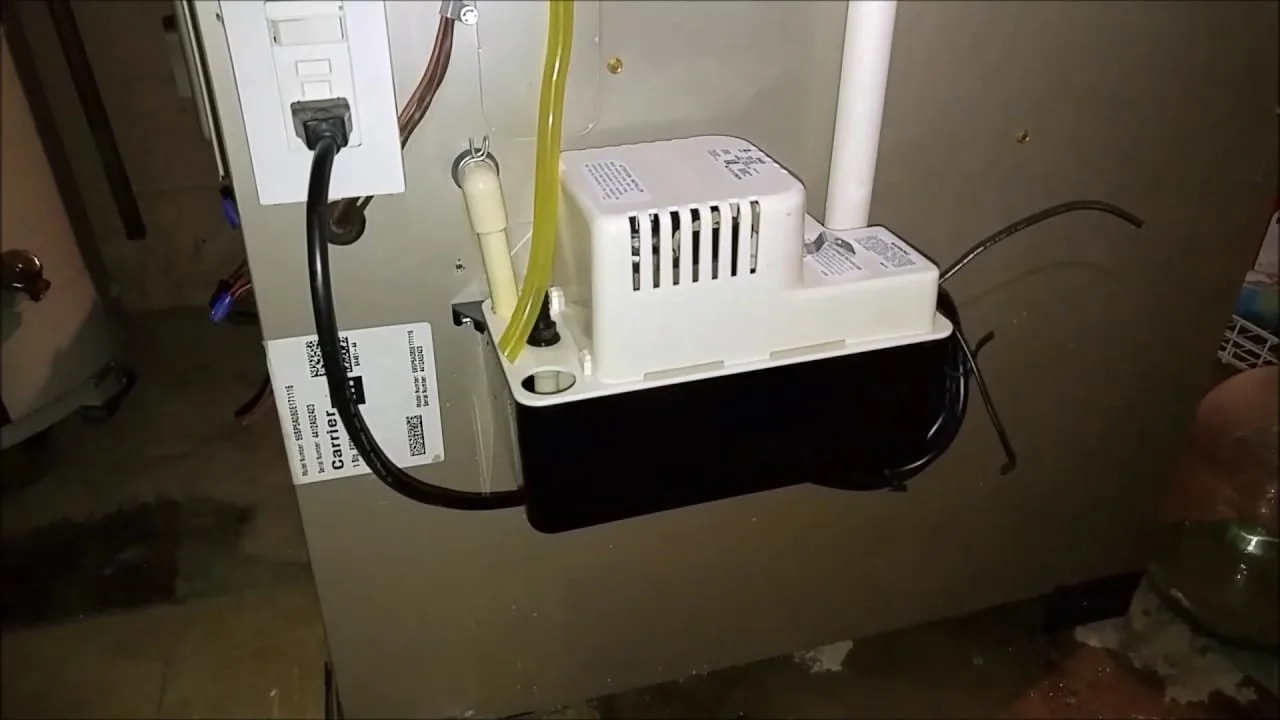
Image Source: Mi Heating Guy/Youtube
Your condensate drain line is a pipe that carries the condensate (water) created when warm air blows over the evaporator coils. It bring it outside so that the water doesn’t build up in the drain pan and leak out.
If the condensate drain line is clogged, though, the normal condensate that drips into the drain pan can’t flow through the drain line. It builds up in the drain pan until it’s full, which triggers a float switch inside the AC unit.
The float switch causes the AC to switch off so that more water won’t drip in and cause the drain pan to overflow. This would result in your AC leaking water.
If your indoor AC unit is located in a basement, you have a condensate pump. That pump pushes the condensate from the drain pan up and out of the house through the condensate drain line.
If the pump isn’t working, the drain pan fills up and triggers the float switch. Both of these scenarios result in your AC being shut off as a safety precaution to prevent water damage.
How to Repair
A clogged condensate line could potentially be a DIY repair, but you risk damaging parts to fix it. Essentially, the drain line needs to be unclogged, usually using a wet/dry vac.
HVAC companies have special tools and vacuums that easily and quickly clear drain line clogs to bring your AC unit back to life.
A broken condensate pump will need to be checked out by an HVAC professional as well. It’s possible they may be able to fix it, or it could need to be replaced.
6. Faulty Capacitors or Shorted Contacts
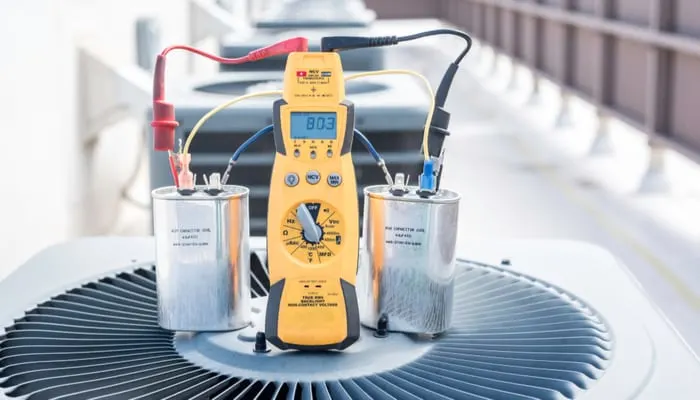
David Spates/Shutterstock
A bad capacitor or shorted contacts in your AC unit will cause it not to turn on, or to take a long time to turn on (30 minutes or more).
Over time, capacitors can dry out and take much longer to store up enough power to turn the AC on. Capacitors can fail due to corrosion, and shorted contacts can happen if water is allowed to sit on top.
If your AC does eventually turn on but takes a long time, or it showed these signs before failing to turn on at all, this could be the problem.
How to Repair
You should not try to repair or check a capacitor under any circumstances. They hold an electrical charge even when the unit is turned off at the breaker.
This makes them very dangerous, especially for anyone attempting a DIY repair. Capacitors have to be discharged under an appropriate electrical load.
Call a professional if you suspect there is a problem with your AC’s capacitor or contacts. They will be able to safely discharge the old capacitor and replace it with a new one.
7. Blown Internal Fuse
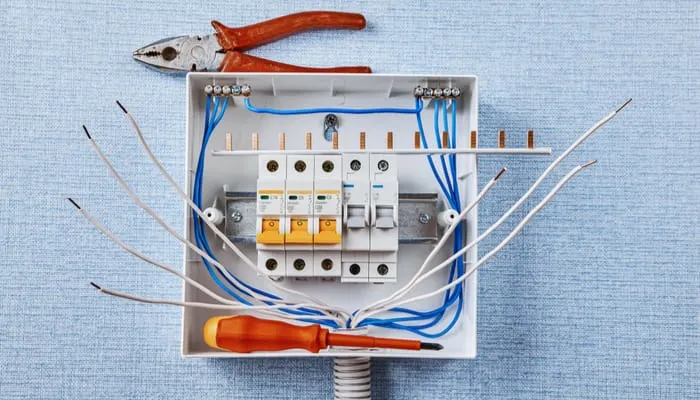
Grigvovan/Shutterstock
Inside your HVAC system, there are fuses in the compressor, evaporator coils, motor, and wiring. The fuses serve to protect each component from being damaged by surges of electrical current.
Each fuse is rated to allow a specific amount of amperage, or current, to flow through it. If the current goes over the rated amount, the fuse will blow and stop the current from flowing beyond it.
If there’s a faulty AC part, short circuit, or circuit overload, it will cause a fuse to blow. That results in the unit failing to operate.
It’s possible that a fuse can blow just because it’s old and in need of replacing. The worst-case scenario is a faulty AC part that needs to be replaced, along with the fuse that blew.
How to Repair
Don’t take the risk of replacing fuses in your AC unit. Not only can it be very dangerous, especially with potential current surges, but it might only be a symptom of a bigger problem.
By calling a professional, you can know whether the fuse was just old or if a deeper issue caused it to blow. Replacing a fuse with an underlying problem will still blow the new fuse, too.
8. Failed Motor
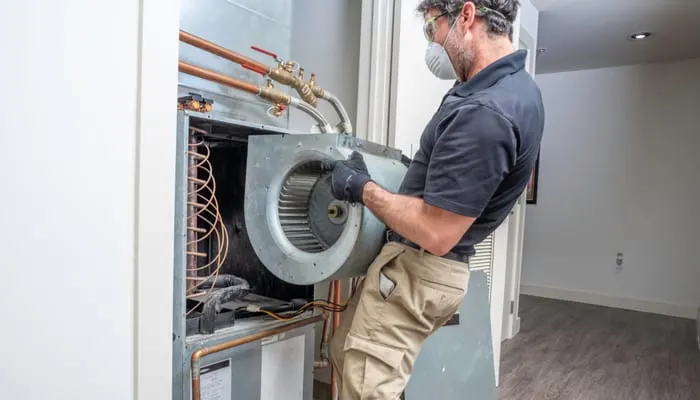
David Spates/Shutterstock
A failed motor is a less common but possible reason your AC won’t turn on. Suspect the motor as the cause if you heard strange noises, like rattling or screeching, from the unit before it shut down completely.
The electrical motor supplies power to the unit, so without it, nothing works. Replacing the motor is a big job, so it’s almost always best to leave this to a pro.
How to Repair
A broken or damaged air conditioner motor is very complex to fix or replace. It’s not a DIY job. Call a professional to inspect the motor and determine if it can be fixed or if it needs to be replaced.
AC Not Turning On? Call a Pro
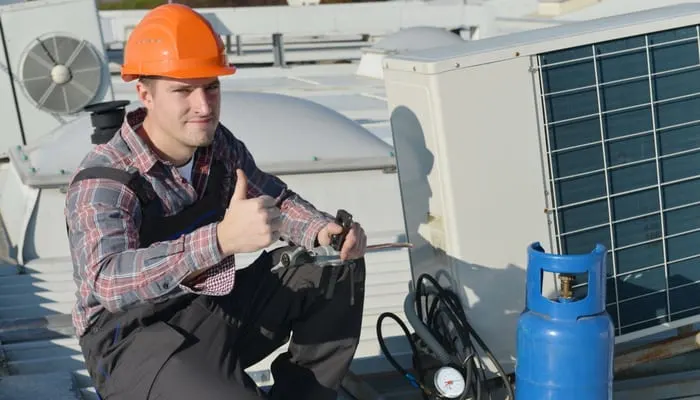
Visionsi/Shutterstock
There are a few simple DIY fixes you can try when your AC isn’t working, but unless you’re highly trained in HVAC and electrical work, you need to leave most of the solutions to a professional.
DIY fixes that are generally safe to take on include:
- Resetting the breaker
- Resetting the shut-off switch
- Changing thermostat batteries
- Changing the filter
Problems that should be left to a professional include:
- Any type of part replacement and installation
- Unclogging condensate drain lines
- Repairing or replacing condensate pumps
- Replacing or repairing capacitors, fuses, and motors
- Complete unit replacements
It’s too hot outside to go without air conditioning in your home. If you’re not sure who to call for quality HVAC work in your city, use our form to enter your zip code to find a licensed professional near you.
You’ll be one step closer to coolness and comfort. Even better? You can get a free quote from up to three local experts.
We partnered with Networx to help you find local HVAC repair in your area. Click to below to get a FREE quote.


